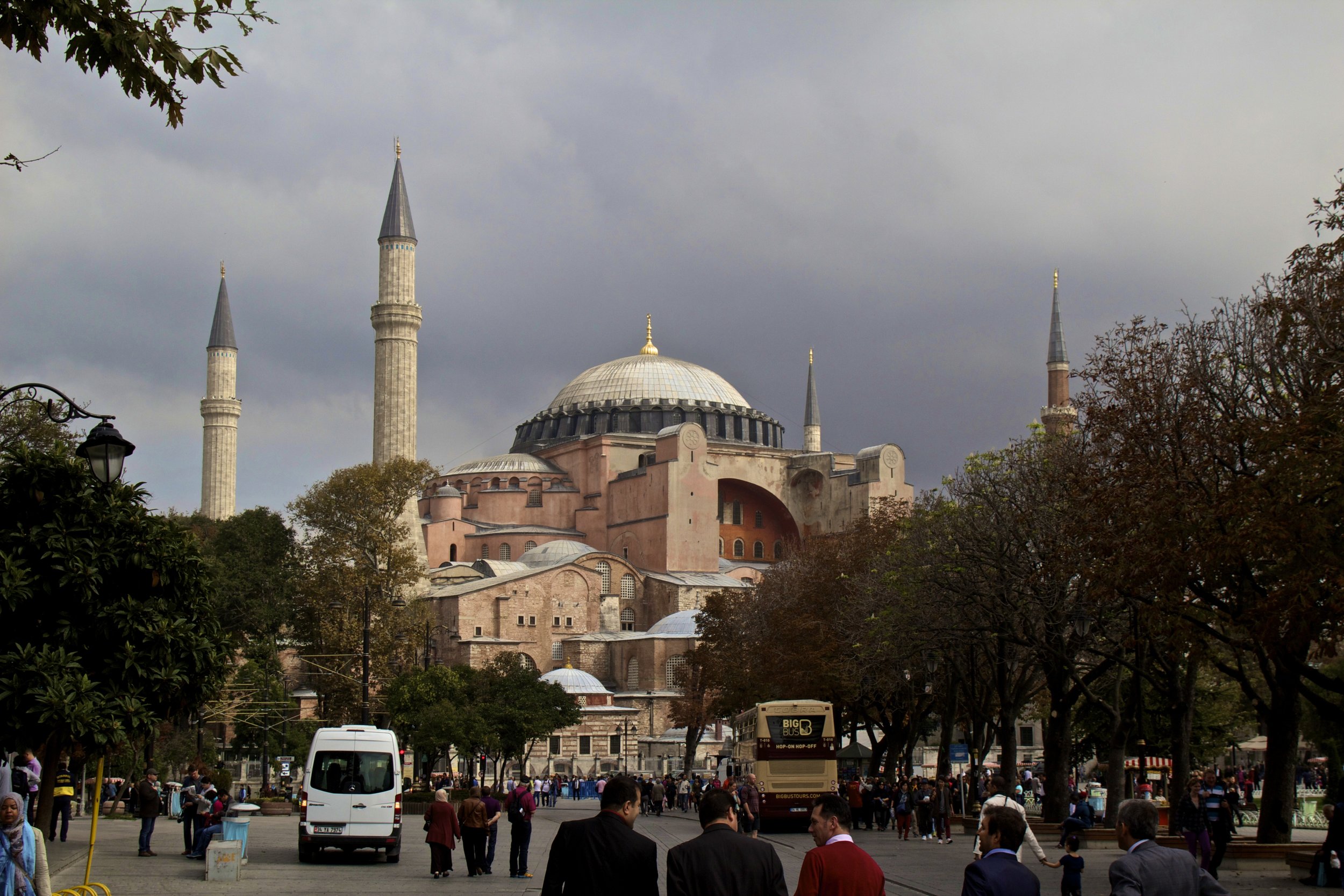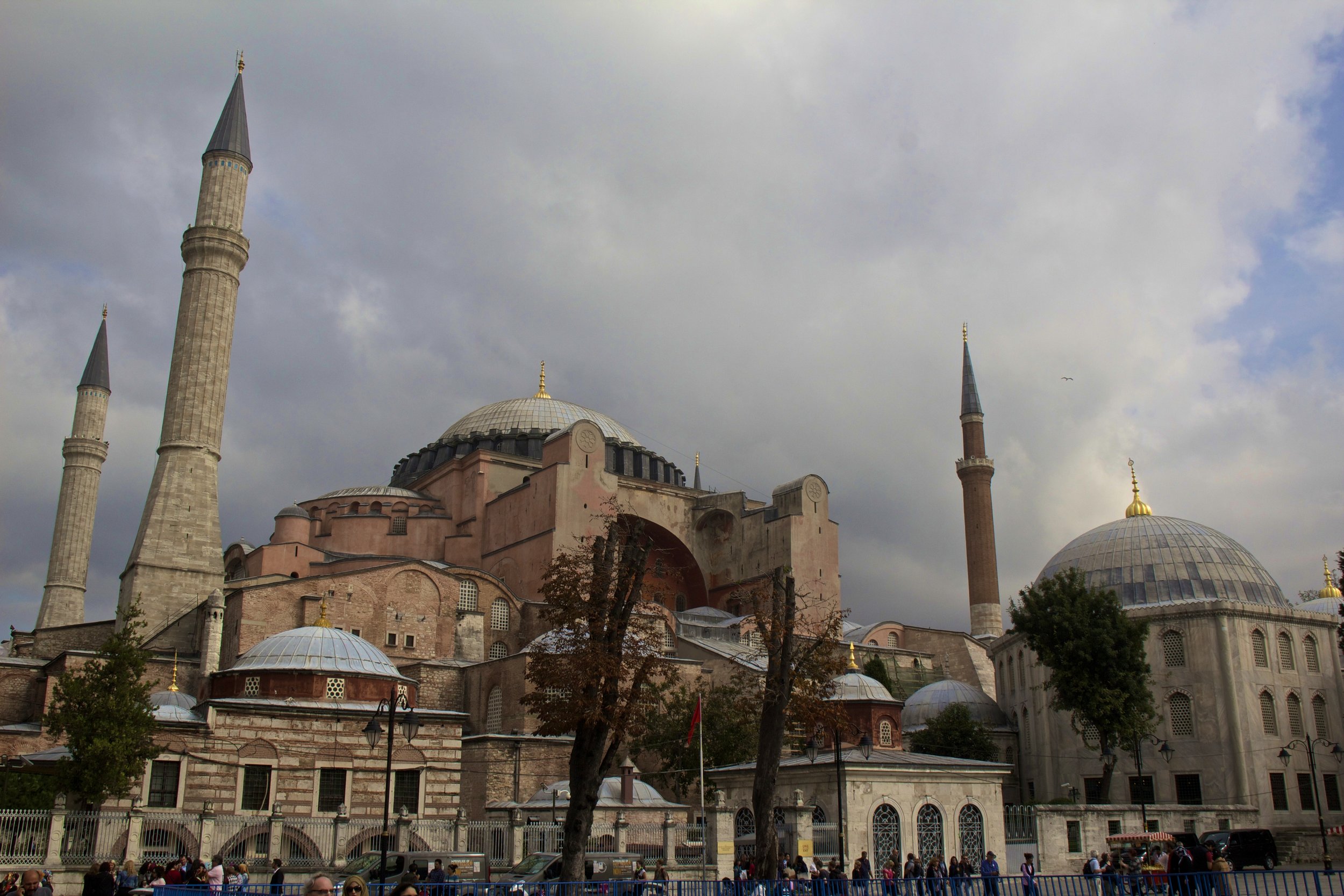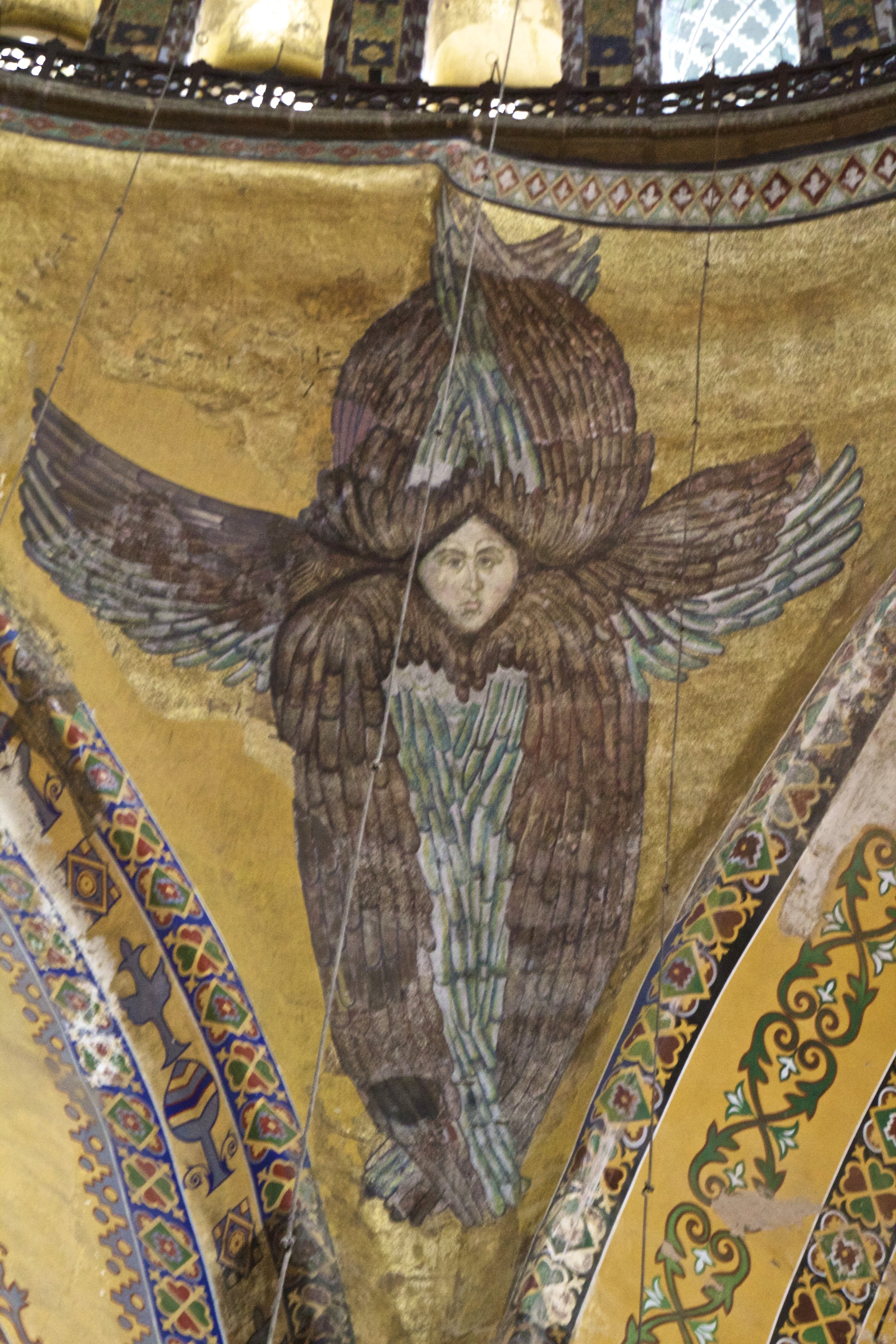The Hagia Sophia was originally constructed as a church by the Byzantine Empire in 547. However, after the Byzantine Empire fell to the Ottoman Empire in 1453, it was converted to a mosque. Istanbul remained the Ottoman capital until the empire fell in World War I. When modern-day Turkey came about in 1923, the Hagia Sophia was retired as a functional religious site, and turned into a museum. However, in spite of it’s sedentary status as a “government building”, the call to prayer is still broadcast from the Hagia Sophia like a normal mosque.
Tickets into the Hagia Sophia cost 30 TRY (Turkish Lira) (10.31 USD), and are well worth the money.
Inside, the evidence of the Hagia Sophia’s history is a lot more striking than I had expected. The traditional Islamic turrets on the either side of the structure had given me expectations of more Islamic architecture inside, but this was far from true. The inside of the Hagia Sophia looks like somebody tried to turn a church into a mosque on a week’s notice, which is literally what happened! Giant pieces of Islamic art hang on the walls, out of place amidst the obviously Christian architecture. The Medieval stone tunnels that lead to the upper levels of the structure feel like something out of a dungeon in Game of Thrones. These tunnels, however, are far old than even Medieval.
Here's Something Weird/Cool...
The Christian murals on the walls have been altered, painted over, or chipped off in many places, as if somebody had started but not finished the task of “Islam-ing up the place.” The most interesting example of this has recently been uncovered on the ceiling’s massive mosaic. Up there, high above the tourists shuffling in and out, are an odd collection of beings. It was originally a group of seraphs (seraphs are a type of angel in Christianity and Judaism). However, when the Ottoman Empire redecorated, they painted over the faces of these mythical beings. Hundreds of years later, in 2010, one of the faces was uncovered. Roughly 3 feet wide, here is that face:
I find this particular piece of the Hagia Sophia to be extremely interesting, so I want you to know that I just summarized an incredible amount of history in a paragraph. If you want to know more about it, you should read THIS ARTICLE.











